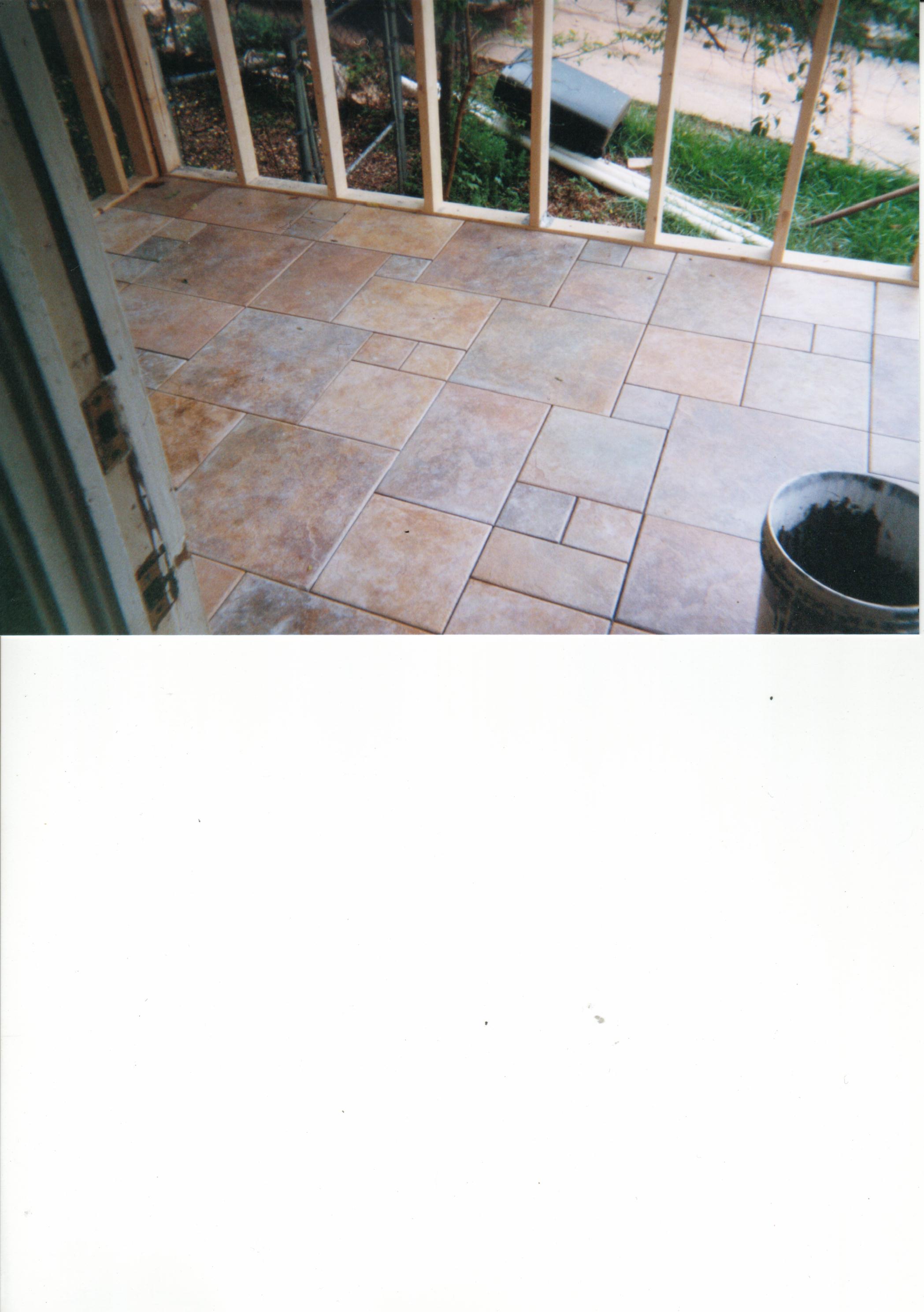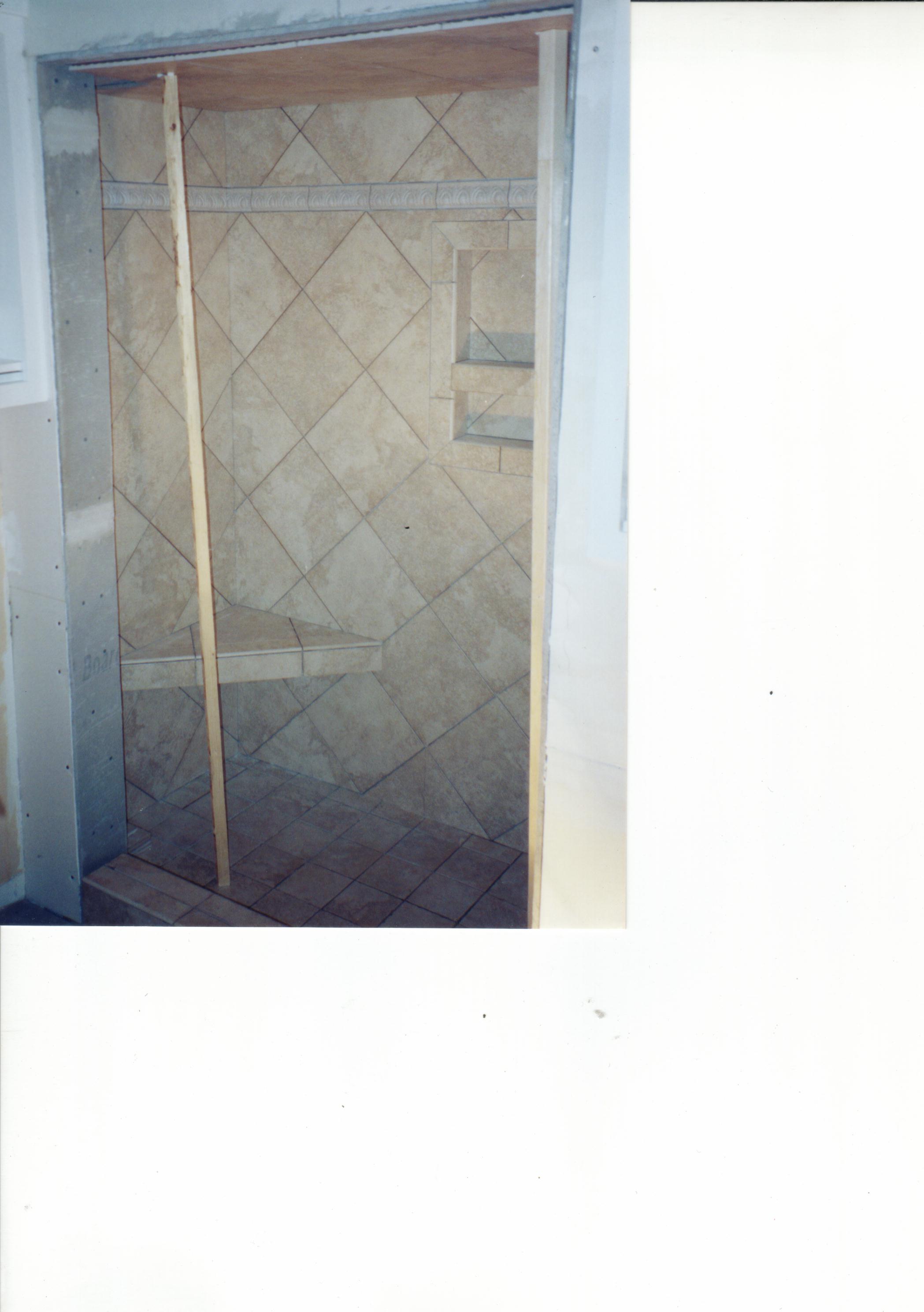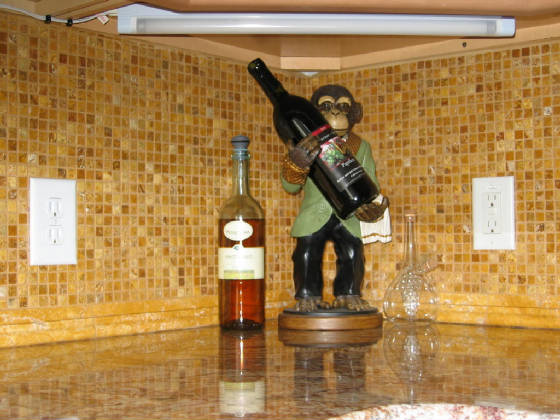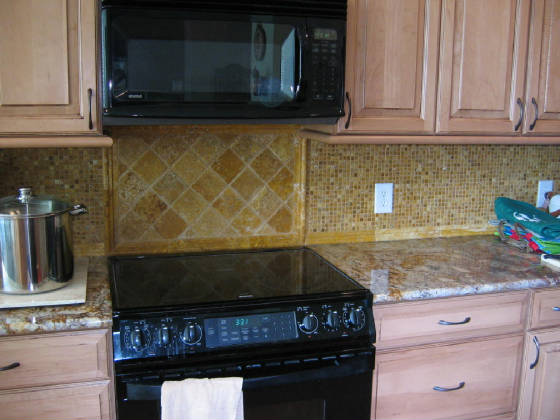Green marble is prone to warping when set with any water based setting
materials. To prevent this, set your green marble with an epoxy mortar. And, don't forget, if using your green marble on a
wall, get non-sag epoxy mortar.
If you are using marble, you should be using an unsanded grout to prevent scratching.
With your standard polished marble, there is no need to go larger than a 1/16" grout joint. Alot of people want to butt the
marble tile and leave no grout joint; but, don't forget that the marble tiles have a beveled edge usually and the grout joint
will allow you to keep your tiles straight when you run into a sizing varience.
I've watched other installers 'try'
to polish the edge of marbles by hand, for instance, along the edge of a shower wall; a better method is to use a 6" disc
grinder with sanding discs in a variety of grits. Start with an 80-grit to form/remove material (to bullnose/bevel) and work
your way up numerically thru' the grits and final polish with a 400-grit.
Granite will require a more aggressive pad to polish than a sandpaper
can provide. Usually something like a diamond resin polishing pad works well. They come in many different grits; anything
from 50 up to 4000. And they come in both wet and dry models.
A good idea here is to actually bullnose the marble pieces along the edge
of your tub/shower wall/countertop, etc...You can either do it by hand with the polisher/grinder as described above or you
can use a profile blade on a tile saw.
If you have marble on your shower/tub walls; wipe down the walls after
each use with a dry towel or squeegee. More on this subject later...
Thinking about a marble or granite countertop? Marble is available in
more colors, but is fairly easy to scratch. I believe that granite would be the better choice because of it's scratch resistance.
Under the right conditions, granite can stain, so a good quality stone sealer should be used...
Hydroflouric acid can ruin a granite surface; so check the label for
the contents of your cleaning products, etc...
A 'flat/level' floor is always important; but, in the real world...it
doesn't always happen. With a polished marble floor, it becomes more important because of strength and aesthetic considerations.
It is best to have a mud bed laid for a polished marble floor because of the reflectivity of the product. You want the
reflection to be true and not askew. And you can't get a 'flat/level' floor any other way...
Test your granite for porosity by taking a small amount of water and
placing it on the granite and letting it sit for aminute and then wiping it off. If there is a dark spot, the granite is quite
porous; if not, do the test again, but let it sit for tow minutes. If there is a dark spot now, the granite is slightly porous.
It is a good idea to seal granite or any natural stone; no matter what...
I've learned that one opinion is that lemon juice would be a better product
to use than water for the above test because of the fact that lemon juice is highly acidic and if you're proposed 'granite'
is not a true granite, it could etch and would have a dull spot where the lemon juice was and this product would not be a
good choice for countertops...
Test the scratchability of your granite by lightly running over the surface with
a knife and if it scratches fairly easily; I would not recommend it for floors or countertops...
Some dark granites are dyed and this can 'cause future problems;
so, check for this by wiping the surface with a white cloth soaked in acetone and if the cloth absorbs no color; it's not
dyed. Also try this with methyl ethyl ketone...
Some granites have mica flakes which have a metallic type appearance.
These can be problematic on flooring installations...
Just to be safe, use a non-staining plumbers putty on your sink fixtures
in a granite countertop...
Always, if possible, check your joist system. The joists, usually 2"x10",
or so, should have an unsupported span of no longer than 9' @ 16" centers. And natural stones, or large format tiles, require
a more substantil subfloor. The maximum deflection allowed with these in the span that we're planning on tiling is L/720.
More on this later.
It's a good idea to wipe down the backs of your stone before setting
them. Usually, the backs are dusty ( especially with slate, etc. ) and this will prevent them from bonding properly.
But, the backs of your tiles should not be wet when setting them. Clean, dust free and dry.




